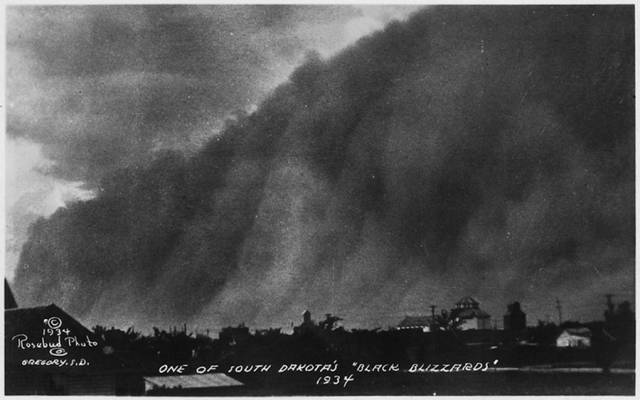One of South Dakota’s “Black Blizzards” – 1934
In North America, the term “Dust Bowl” was first used to describe a series of dust storms that hit the prairies of Canada and the United States during the 1930s, and later to describe the area in the United States that was most affected by the storms, including western Kansas, eastern Colorado, northeastern New Mexico, and the Oklahoma and Texas panhandles.
The “black blizzards” started in the Eastern states in 1930, affecting agriculture from Maine to Arkansas. By 1934 they had reached the Great Plains, stretching from North Dakota to Texas, and from the Mississippi River Valley to the Rocky Mountains. “The Dust Bowl” (as an area) received its name following the disastrous “Black Sunday” storm in April 1935, when reporter Robert L. Geiger referred to the region as “The Dust Bowl” in his account of the storm.
If you have some time, The Dust Bowl is a fantastic Ken Burns documentary.
